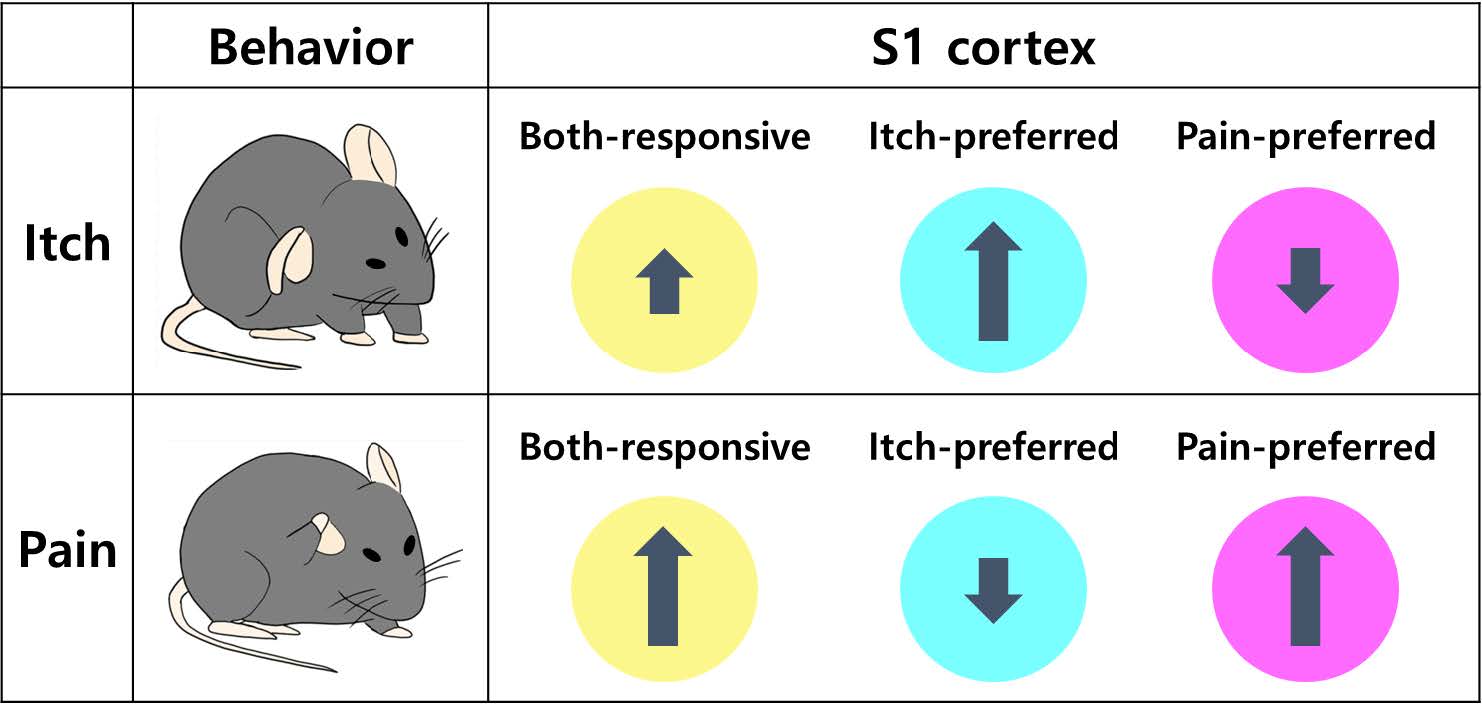Articles
Article Tools
Stats or Metrics
Article
Short Communication
Exp Neurobiol 2022; 31(5): 324-331
Published online October 31, 2022
https://doi.org/10.5607/en22029
© The Korean Society for Brain and Neural Sciences
Multiplexed Representation of Itch and Pain and Their Interaction in the Primary Somatosensory Cortex
Seunghui Woo1, Yoo Rim Kim2,3, Myeong Seong Bak1, Geehoon Chung1,4, Sang Jeong Kim2,3,5* and Sun Kwang Kim1,4*
1Department of Science in Korean Medicine, Graduate School, Kyung Hee University, Seoul 02447, 2Department of Physiology, Seoul National University College of Medicine, Seoul 03080, 3Neuroscience Research Institute, Seoul National University College of Medicine, Seoul 03080, 4Department of Physiology, College of Korean Medicine, Kyung Hee University, Seoul 02447, 5Department of Biomedical Sciences, Seoul National University College of Medicine, Seoul 03080, Korea
Correspondence to: *To whom correspondence should be addressed.
Sang Jeong Kim, TEL: 82-2-740-8229, FAX: 82-2-763-9667
e-mail: sangjkim@snu.ac.kr
Sun Kwang Kim, TEL: 82-2-961-0323, FAX: 82-2-961-0333
e-mail: skkim77@khu.ac.kr
This is an Open Access article distributed under the terms of the Creative Commons Attribution Non-Commercial License (http://creativecommons.org/licenses/by-nc/4.0) which permits unrestricted non-commercial use, distribution, and reproduction in any medium, provided the original work is properly cited.
Abstract
Itch and pain are distinct sensations that share anatomically similar pathways: from the periphery to the brain. Over the last decades, several itch-specific neural pathways and molecular markers have been identified at the peripheral and spinal cord levels. Although the perception of sensation is ultimately generated at the brain level, how the brain separately processes the signals is unclear. The primary somatosensory cortex (S1) plays a crucial role in the perception of somatosensory information, including touch, itch, and pain. In this study, we investigated how S1 neurons represent itch and pain differently. First, we established a spontaneous itch and pain mouse model. Spontaneous itch or pain was induced by intradermal treatment with 5-HT or capsaicin on the lateral neck and confirmed by a selective increase in scratching or wiping-like behavior, respectively. Next, in vivo two-photon calcium imaging was performed in awake mice after four different treatments, including 5-HT, capsaicin, and each vehicle. By comparing the calcium activity acquired during different sessions, we distinguished the cells responsive to itch or pain sensations. Of the total responsive cells, 11% were both responsive, and their activity in the pain session was slightly higher than that in the itch session. Itch- and painpreferred cells accounted for 28.4% and 60.6%, respectively, and the preferred cells showed the lowest activity in their counter sessions. Therefore, our results suggest that S1 uses a multiplexed coding strategy to encode itch and pain, and S1 neurons represent the interaction between itch and pain.
Graphical Abstract

Keywords: Itch, Pain, Primary somatosensory cortex, Two-photon imaging


